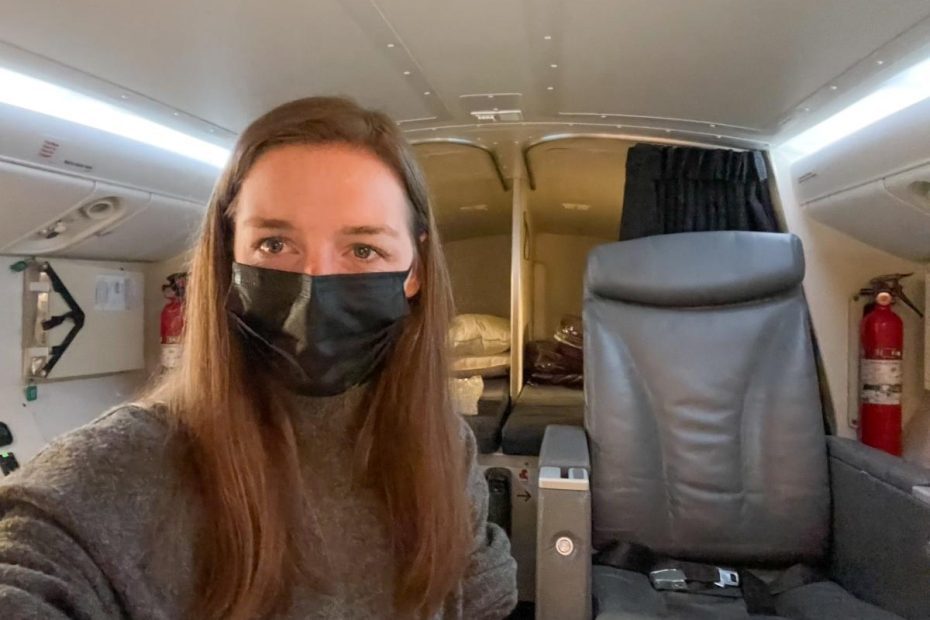-
Pilots work shifts on long flights. When they are not flying, they rest in hidden rooms.
-
I was given a tour of the secret room above business class on an Air New Zealand Boeing 777-300ER.
-
It was the nicest seat on the plane, with two beds, two recliners and plenty of space.
Twelve hours on a plane is a long time.
But when you are responsible for flying the plane, it is an even more demanding role, which is why pilots take turns on long-haul flights.
When pilots are not in the cockpit, they rest in secret spaces on board the aircraft.
During a 12-hour flight with Air New Zealand from Auckland, New Zealand, to Los Angeles, I was given a tour of this part of the plane that most people don't see.
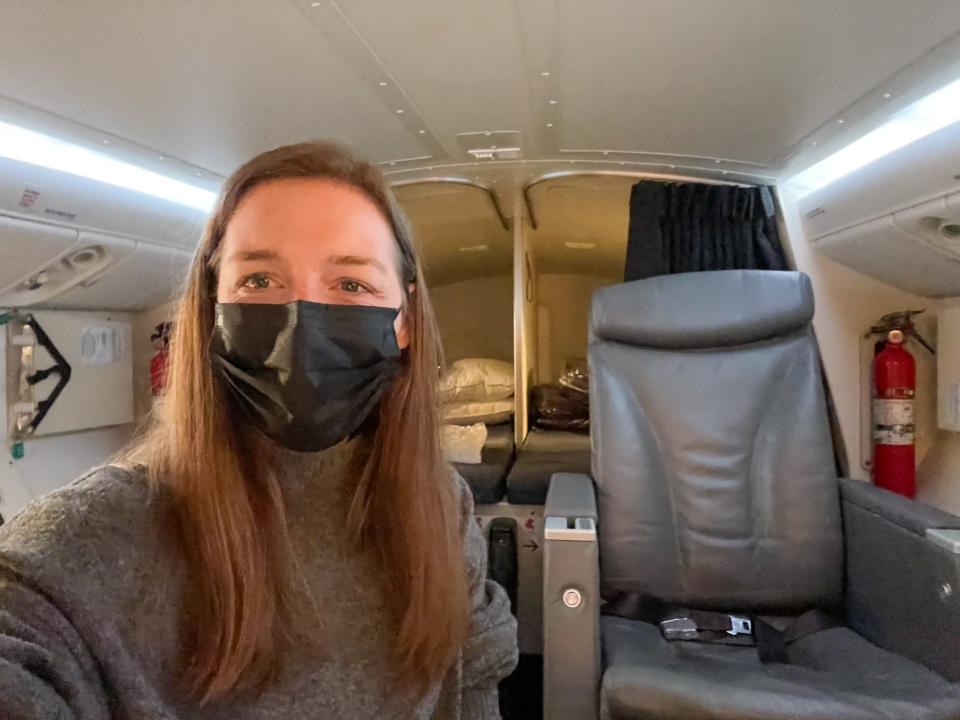

Together we walked past the rows of seats that could be laid flat and to the front kitchen of the plane.
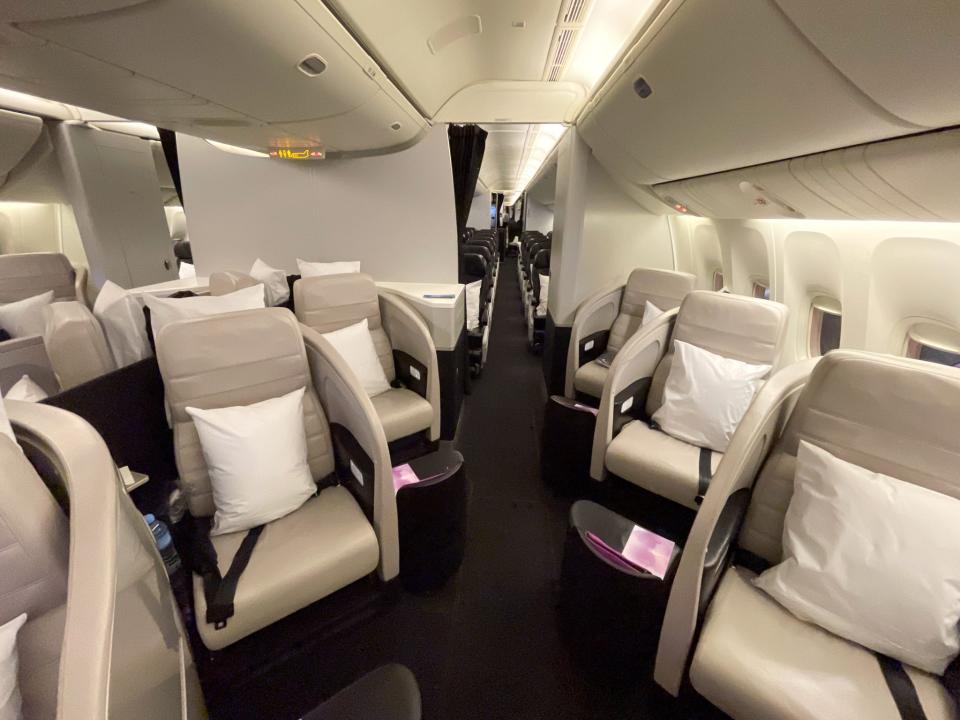

From the galley I could see the cockpit of the plane. When I looked around I saw no door or signs pointing to the pilot's rest area.
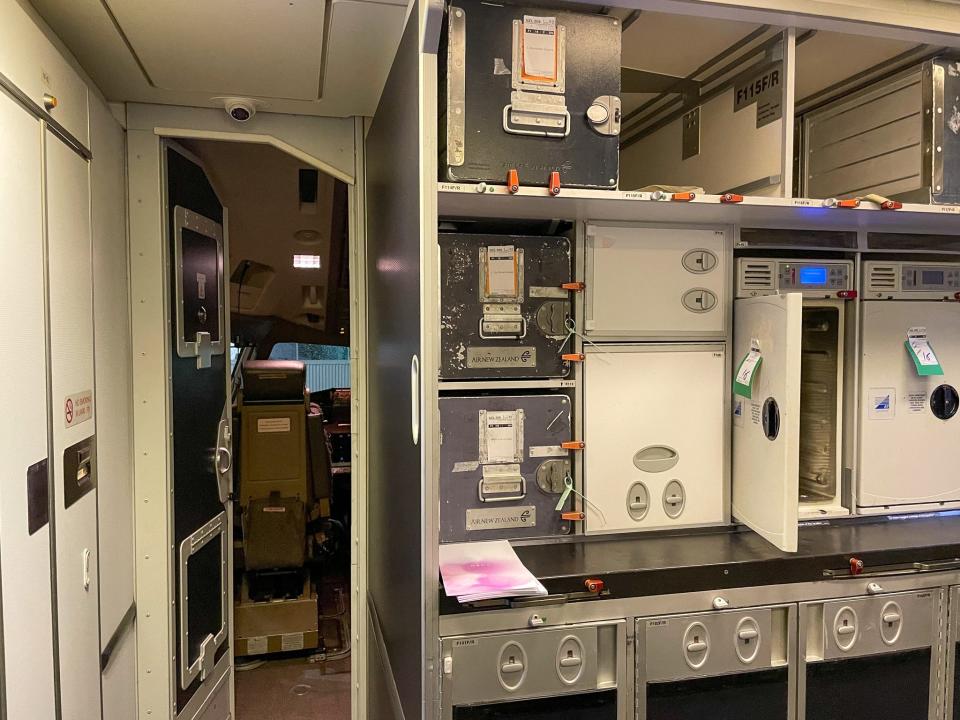

Then Sarita pointed to a camouflaged door. She explained that it was deliberately hidden so that passengers would not accidentally disturb the resting pilots.
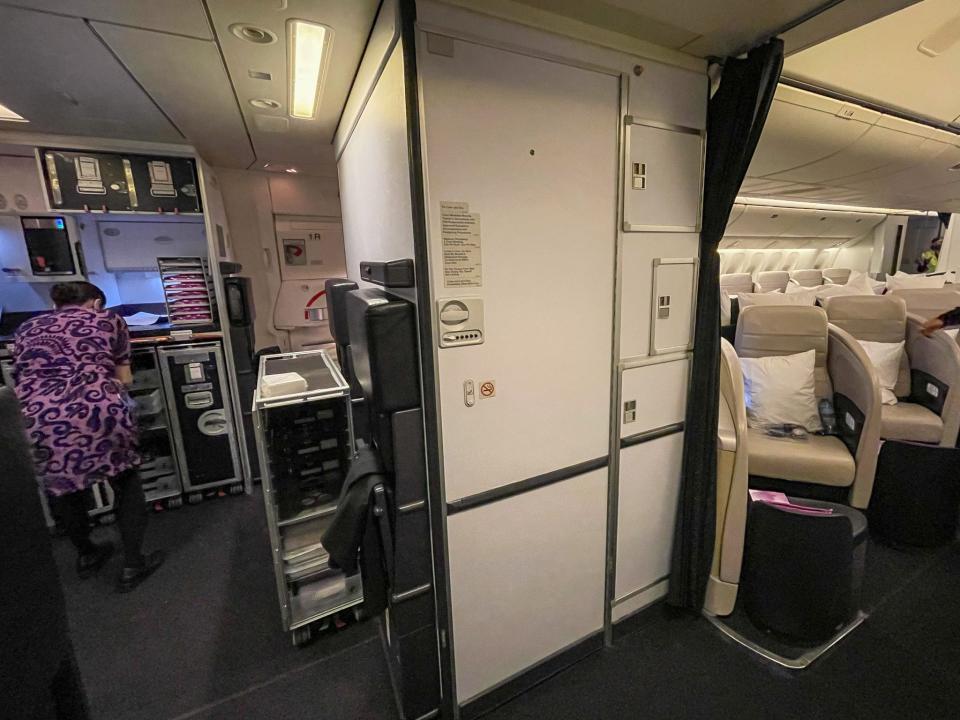

Sarita entered a secret code and opened the bolt. Behind the door was a narrow, steep staircase. I climbed up and was immediately shocked by the size of the room.
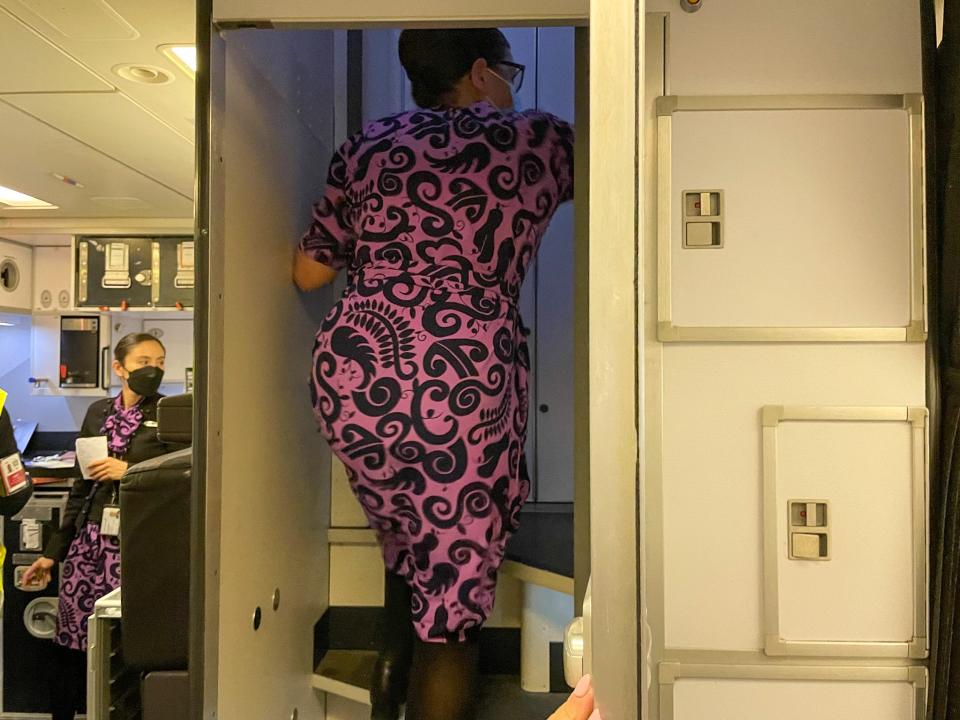

Although I couldn't stand fully at 1.73 meters, there was enough space in the room for two lounge chairs and two beds.
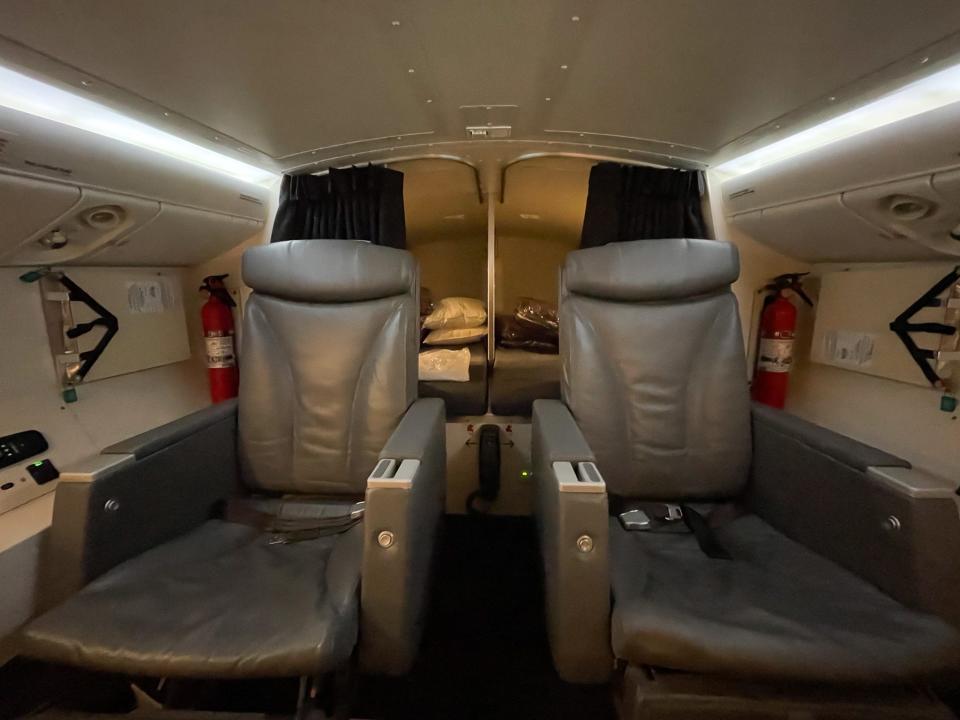

She said that on most long-haul flights, four pilots split time between the cockpit and the rest area. Regulations require that at least two pilots be in the cockpit at any time during the flight.
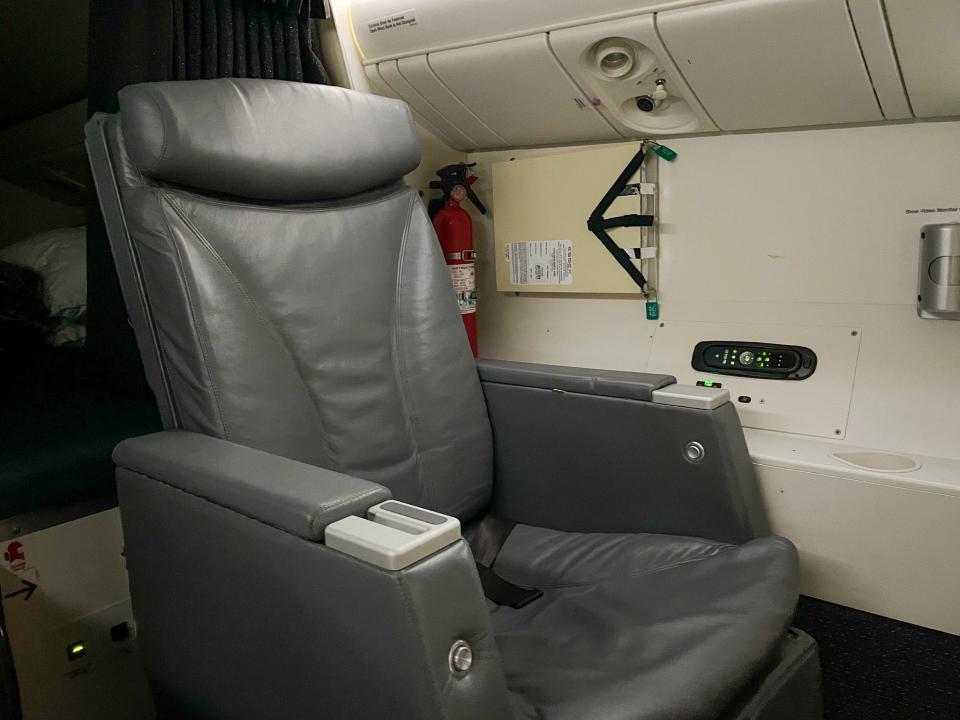

The captain of the flight usually determines when the breaks occur, but like flight attendants, pilots usually take their breaks in two-hour blocks. After a break, the pilots spend their time in the recliner, a bunk bed or a combination of both.
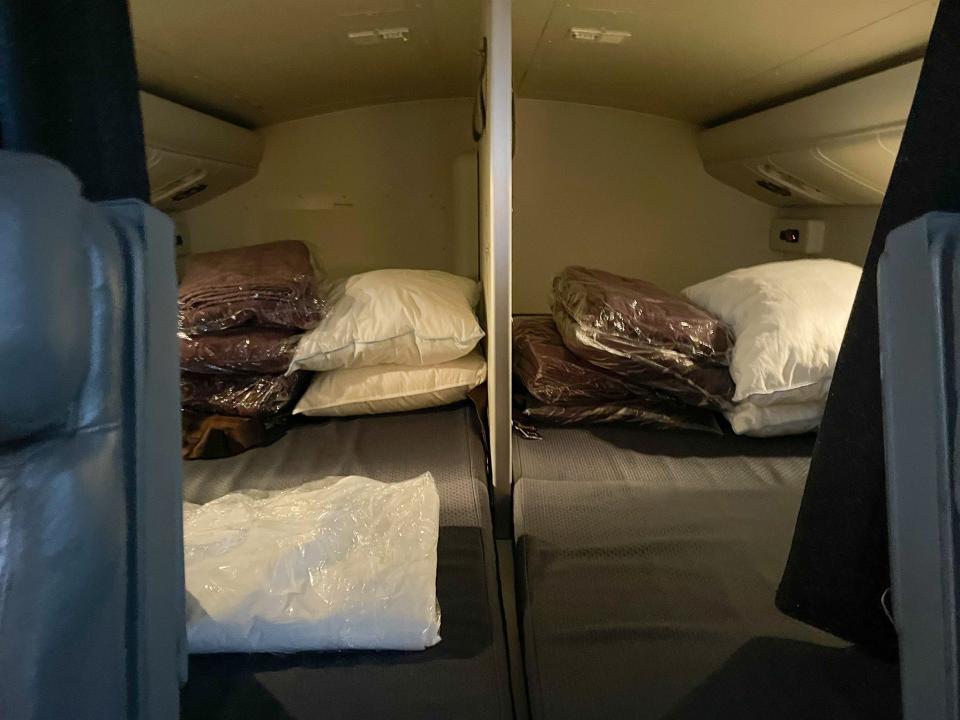

Regardless of where they rested, seat belts were provided in every area for safety.
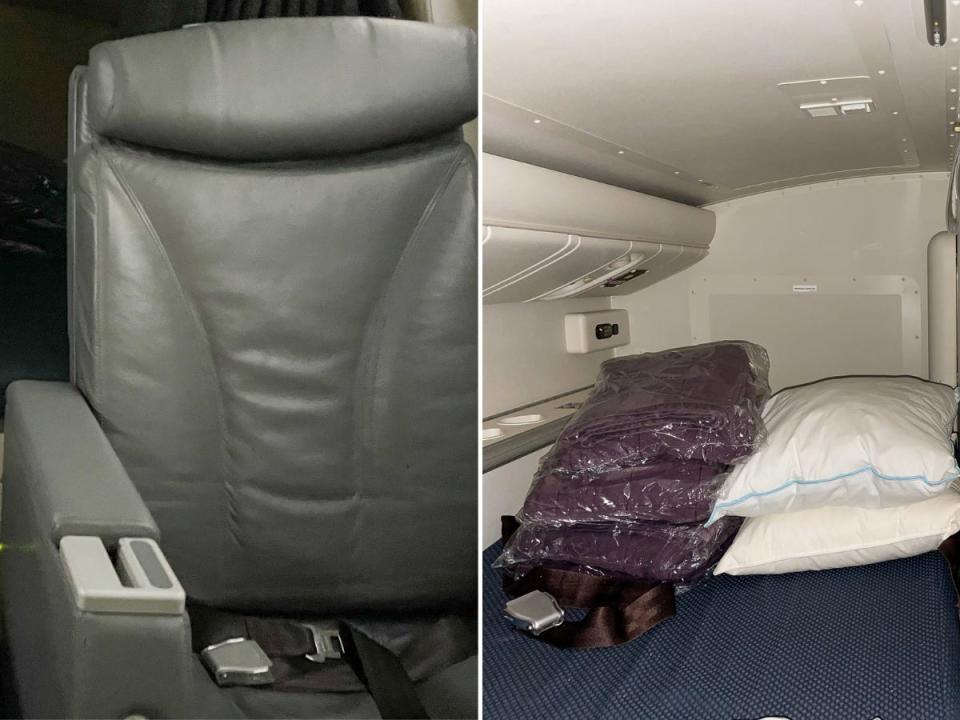

The pilots also had a TV similar to the one I had in business class, by the recliners. Next to it was a power outlet, a temperature control panel and cup holders.
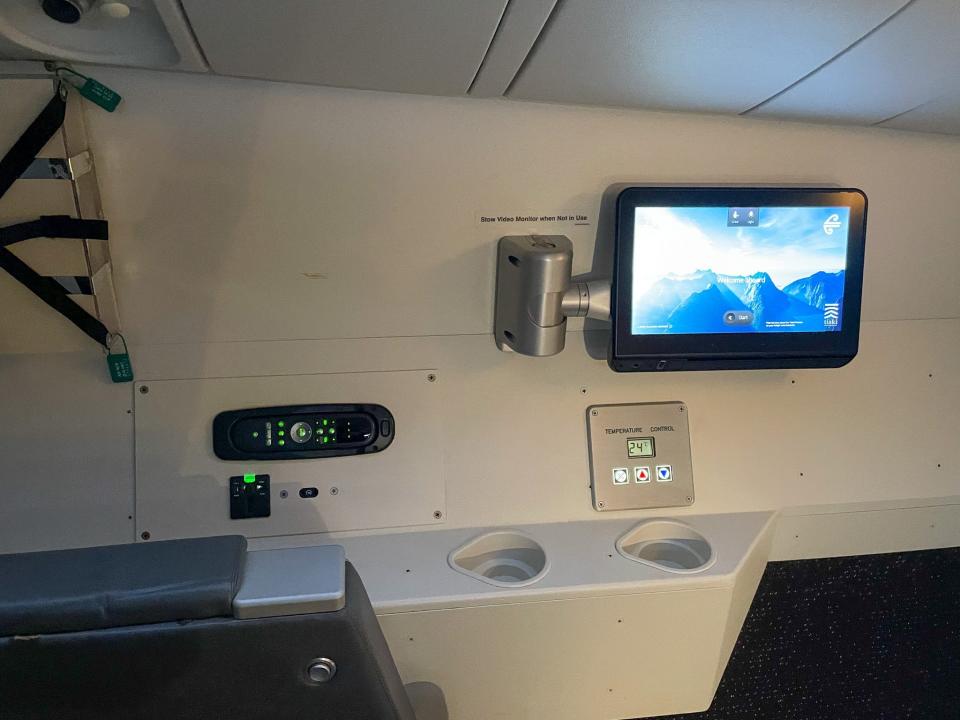

Between the seats was a telephone that allowed the pilots to communicate with the cockpit and cabin crew.
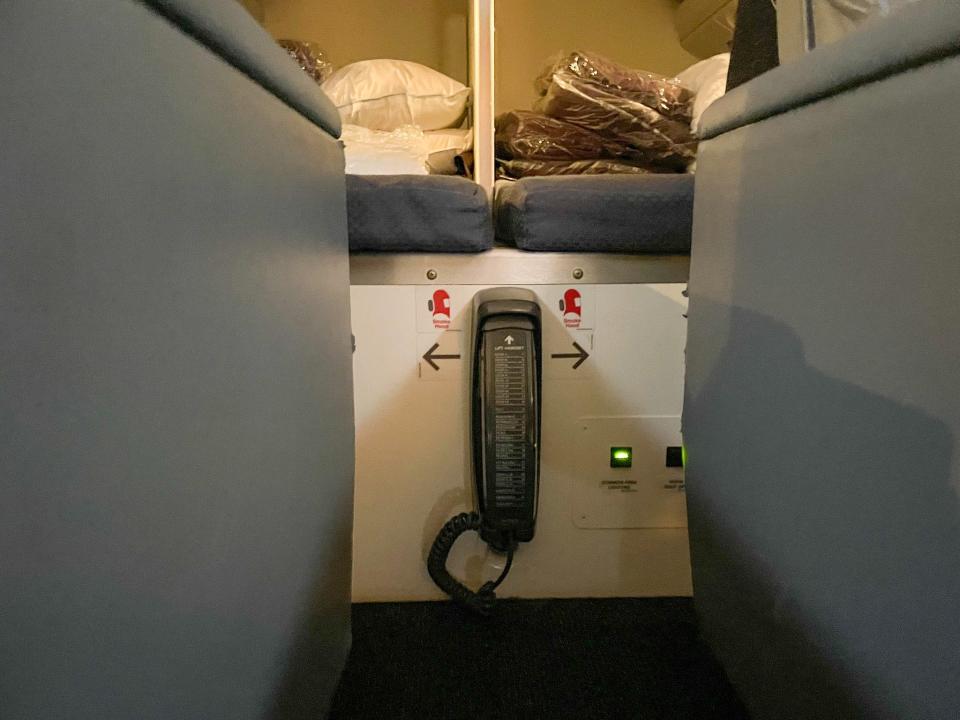

Behind the leather seats were two beds.
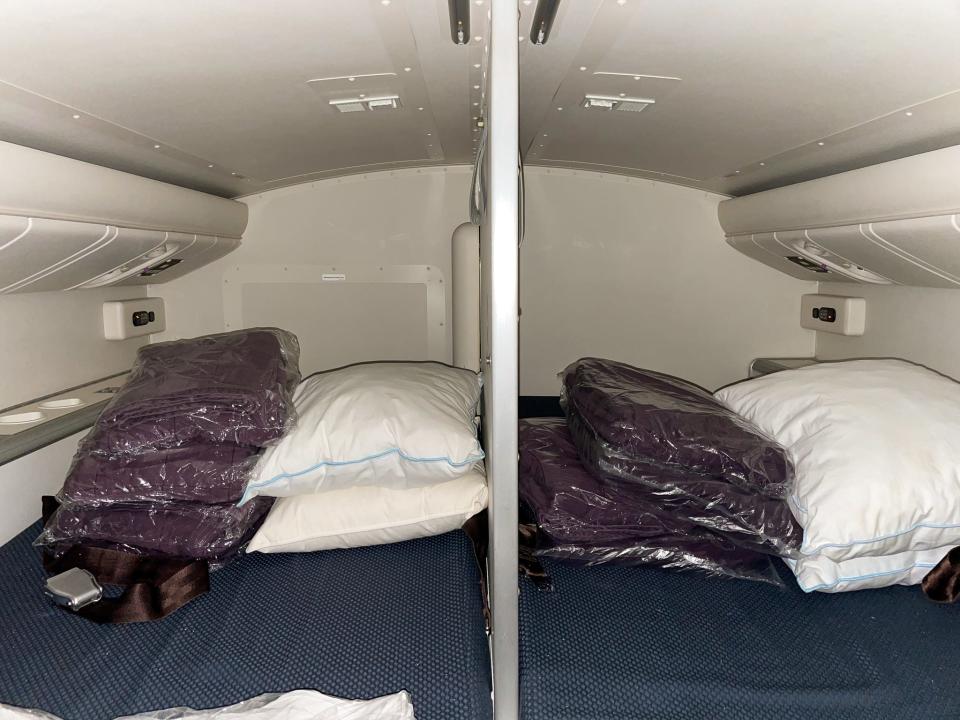

The narrow beds each had a curtain to block out the light and ensure privacy.
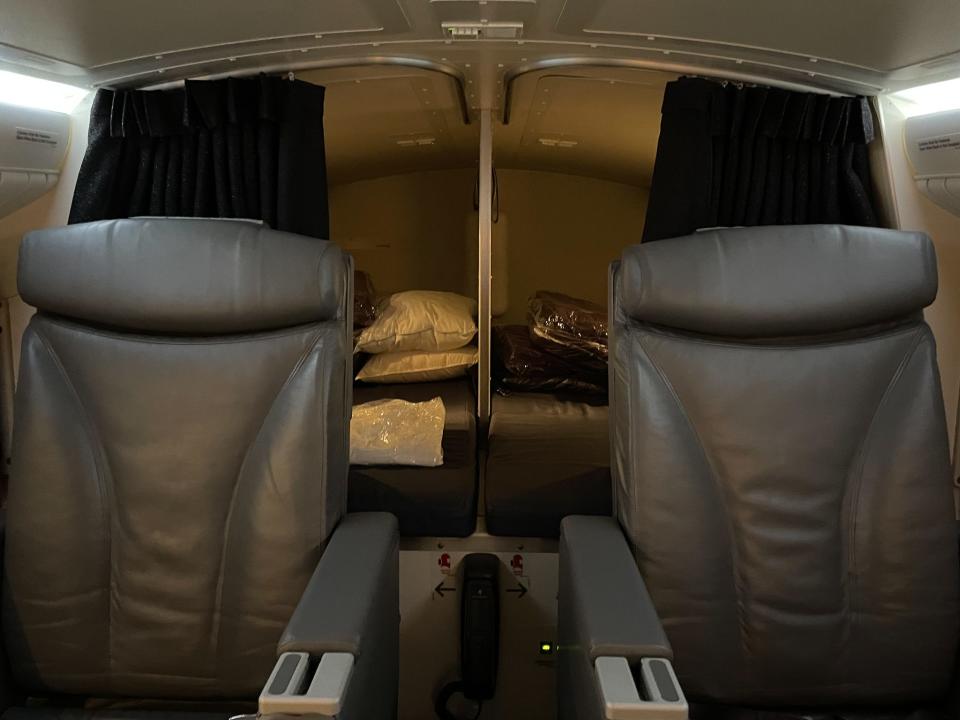

The sleeping cabin had two sets of blankets and pillows, similar to those I had in business class. The mattress on the bed looked comfortable enough for a decent nap.
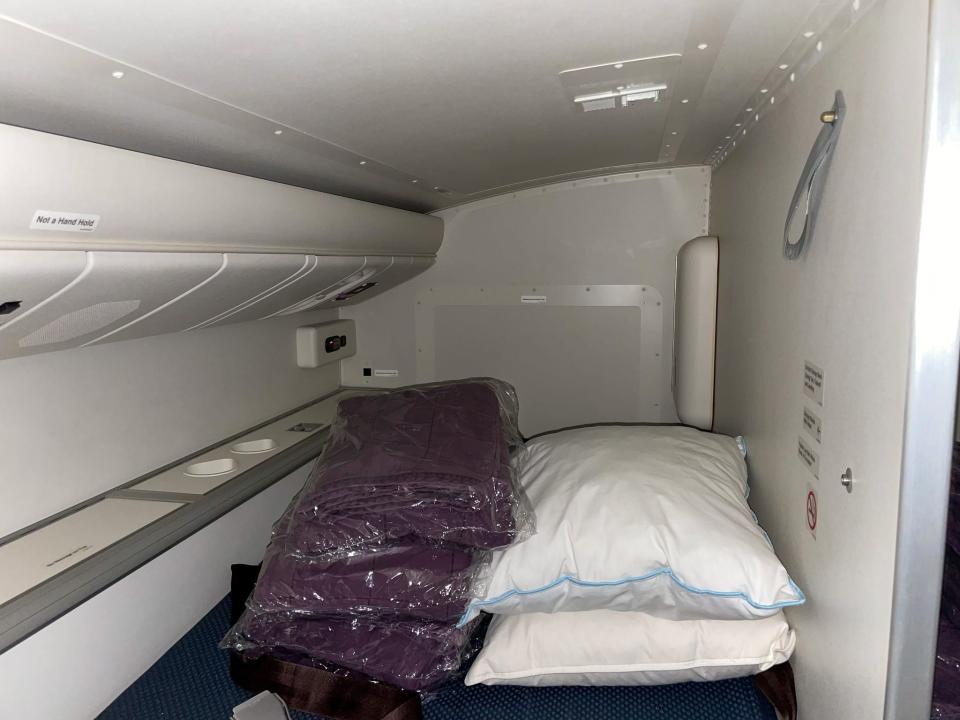

Along the edge of the bed I noticed more cup holders and a control panel for the lights and airflow.
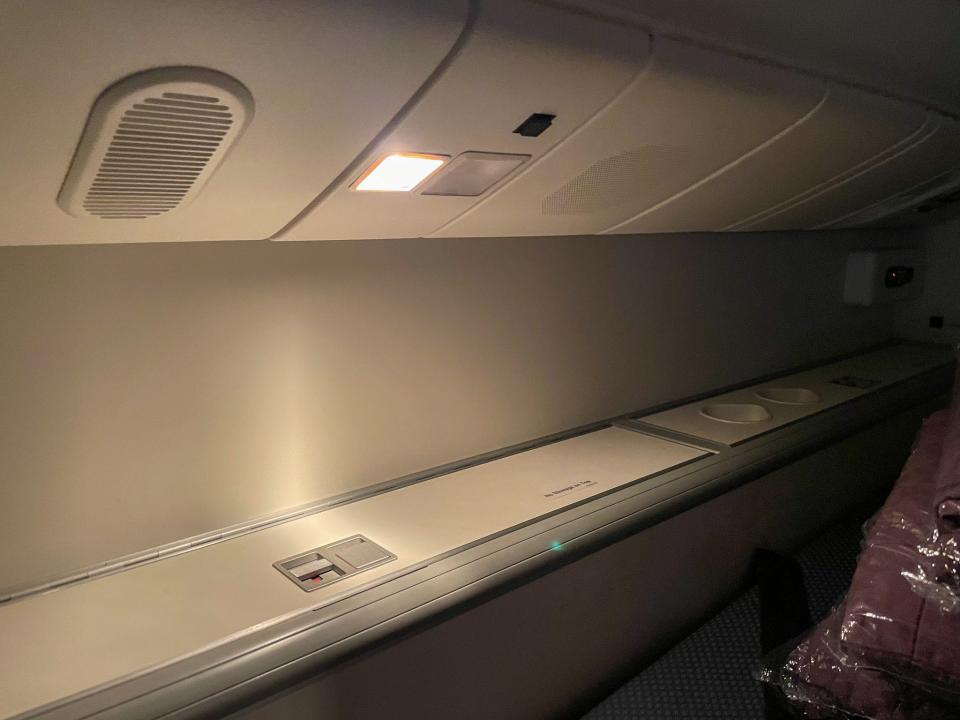

As I descended the stairs, I saw a wardrobe. Sarita told me that pilots store parts of their uniforms there when they rest.
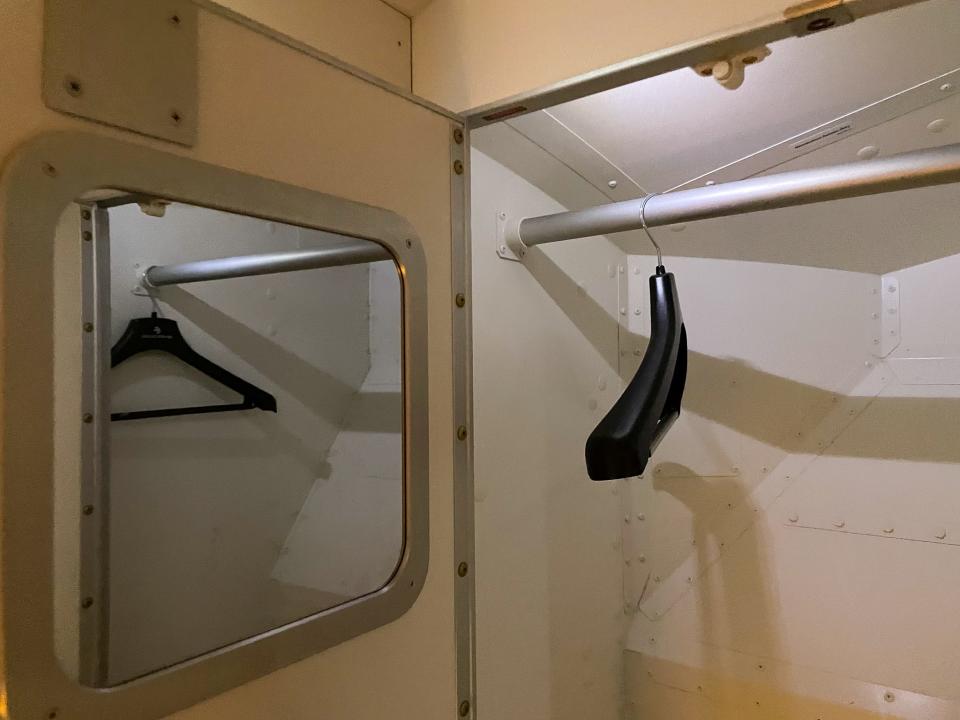

I felt pampered in my business class seat, but the pilot’s cabin was even more luxurious. They had privacy, space to stretch out, and a larger bed than my seat that you could lie completely flat in.
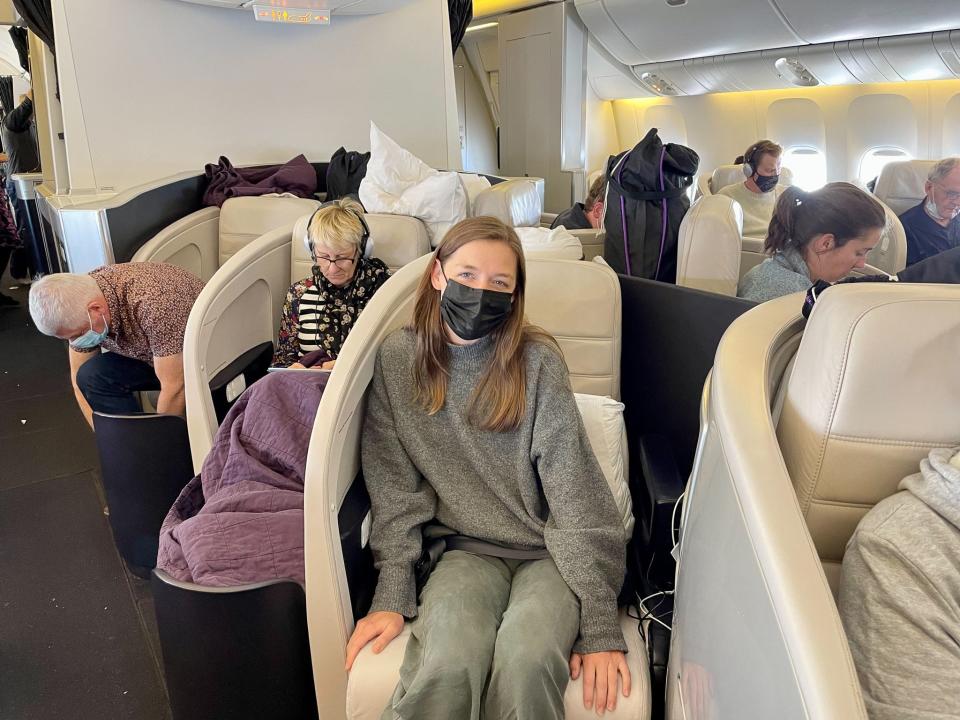

And of course, those perks were well-earned. On my flight home, I slept better knowing the pilots had space to rest and recharge for some of the longest flights in the world.
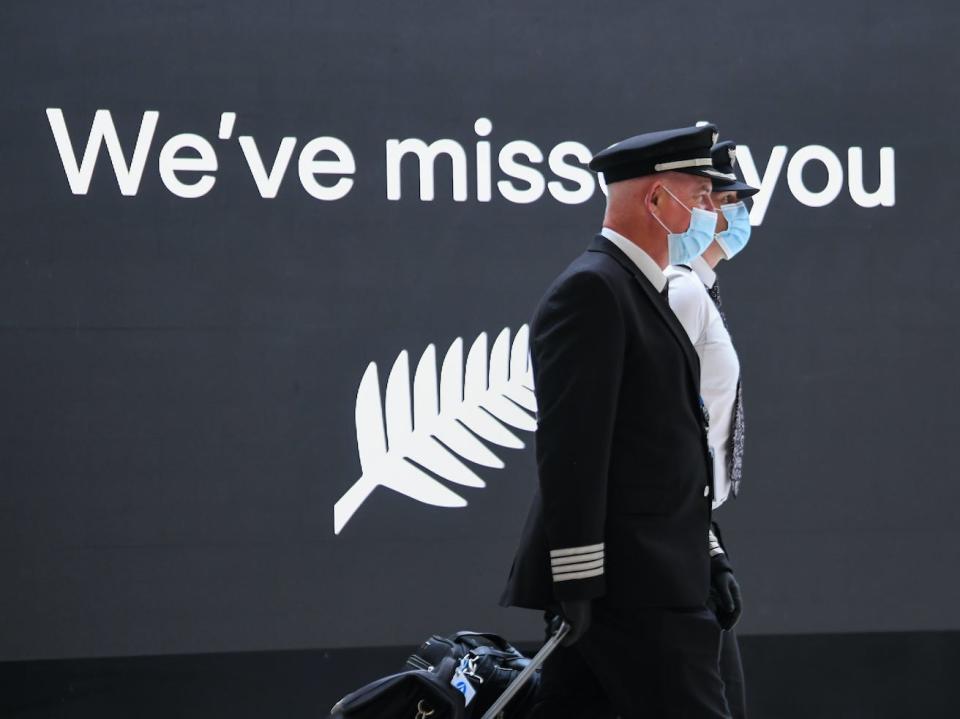

Read the original article on Business Insider
